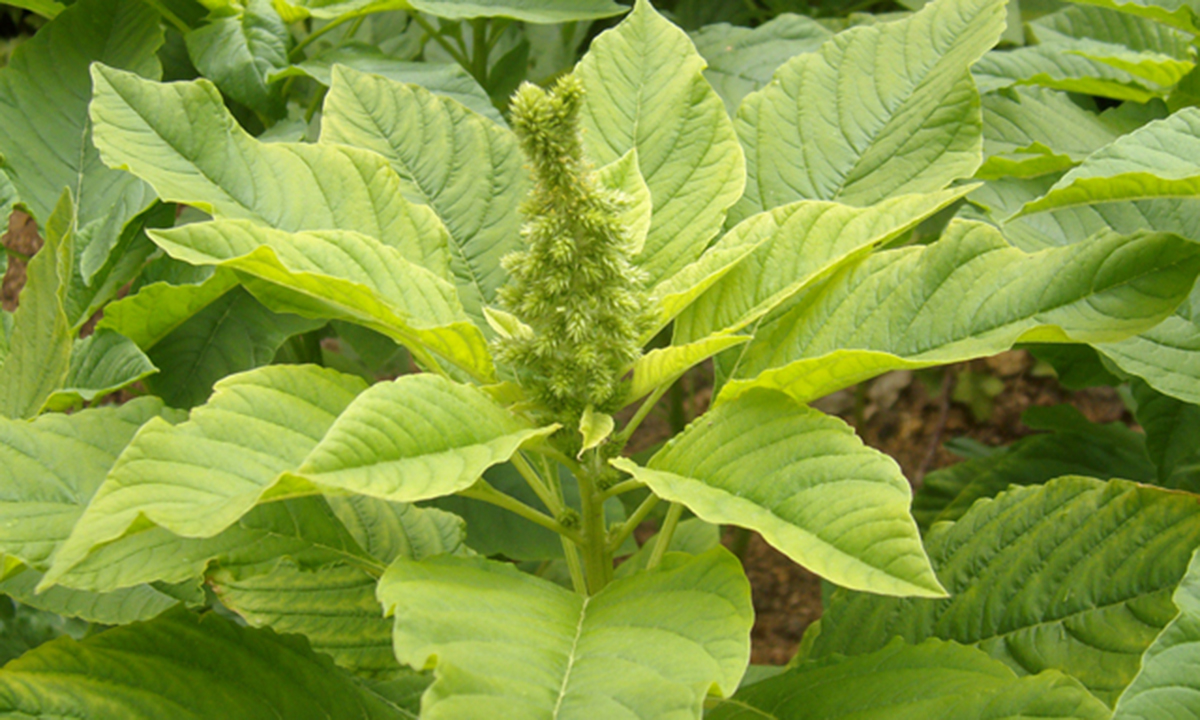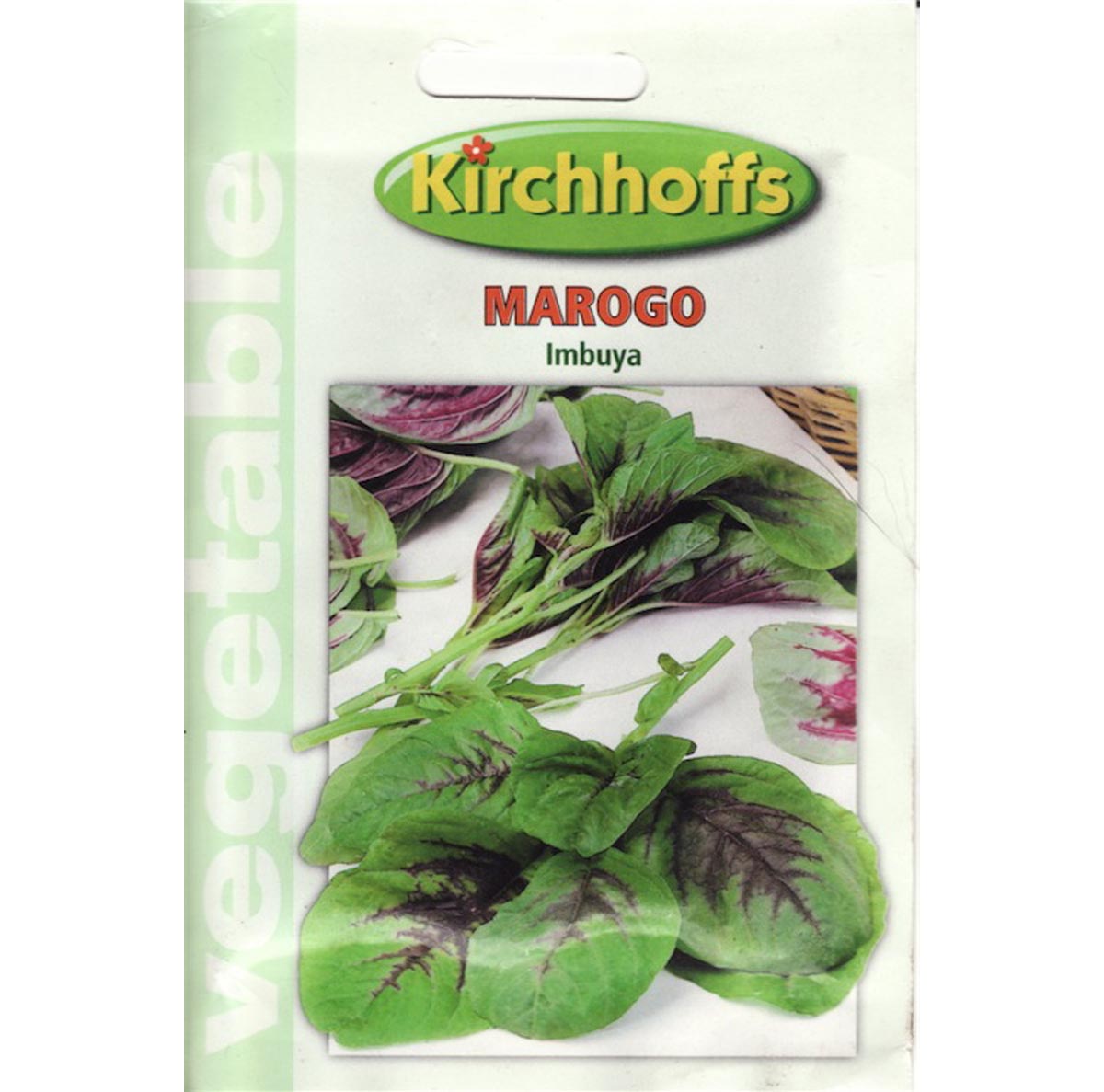Table of Contents
Morogo, a traditional African food plant of the Amaranth family, is a spinach-type leafy plant that is packed with nutrients. Also known as pigweed (and sometimes spelled Marogo), it is rich in protein and contains minerals (including iron and calcium), vitamins A and C, and trace elements.
While not a common vegetable on supermarkets shelves, according to Phakamani Xaba from Kirstenbosch National Botanical Garden’s South African National Biodiversity Institute (SANBI), there is some large-scale commercial cultivation of several types of Amaranth which is mostly exported to first world countries as “a high-demand health food.”

The Amaranthus Family

Xaba talks generally about Amaranths, and lists the plant’s common names according to different southern African languages:
- Common pigweed (English)
- Misbredie (Afrikaans)
- Maroga and tepe (Sotho)
- Thepe (Tswana)
- Serepelele and theepe (Pedi)
- Umfino, mbuya and utyutu (Xhosa and Zulu)
He also mentions several species including the nematode-resistant A. cruentus, grown for its nutritious leaves, and two ornamental species, A. hypochondriacus and A. caudatus, both of which are featured photographically in The Royal Horticulutral Society Gardeners’ Encyclopedia of Plants and Flowers. A. caudatus is particularly attractive, with its pendulous panicles of long, deep wine-red tassel-type flowers reaching to the ground.
According to other sources, A. cruentus has been grown for its grain (seeds) for centuries, is a traditional pseudo-cereal crop in Latin America, India and Nepal. Grain amaranth is also cultivated commercially in some hot, dry part of the US, Argentina and China.
Writing in K. V. Peter’s book Underutilized & Underexploited Horticultural Crops, E. ven den Heever and S. L. Venter of the South African Agricultural Research Council maintain that Amaranths could not only be used to address malnutrition problems in Africa, but could also reduce poverty in communities, decrease environmental damage, increase food supply, and provide farmers with an income.
They discuss how amaranth grain and maize were the staple foods of both the Peruvian Incas and Mexican Aztecs, and point out that while A. cruentus has been grown as a dual crop (for its leaves and grain) in Europe, it is not indigenous to South Africa so not cultivated for its grain. They state that there are six species of Amaranthus weeds in SA, including A. cruentus, A caudatus, and A. hybridus, and like Xaba, they state that marogo is a common Sotho name for Amaranth – as is marog (Afrikaans). However they don’t specify which specific species marogo (or morogo) is.
Morogo And Traditional Leafy Vegetables
The anomaly of morogo is that it is identified as a specific plant by some, and lumped together with other traditional leafy vegetables by others. This is probably in part due to a lack of botanical knowledge by local African tribes. For example the Setswana people refer to a variety of traditional leafy vegetables as “morogo.” The Tswana word for vegetables is also morogo. This idea is perpetuated by the Morogo Research Programme at North-West University in Potchefstroom where "morogo" research studies focus on any traditional leafy vegetables. Taking this a step further, researcher Willem Sternberg Jansen van Rensburg states categorically that morogo (also called imifino) is a term that is used “for all green, leafy vegetables,” including the greens of conventional crops like beetroot or pumpkin.
However, in one of his papers he describe how rural women in the northern South African Mpumalanga and Limpopo Provinces harvest the seeds of certain amaranths, and sow the seeds annually. He also concedes that these particular green leafy vegetables are “treated as crops.” Surely this is marogo? Certainly it looks like the crop produced from seed produced and distributed by several South African seed companies.
READ Kimchi Health Benefits: Why This Korean Dish Is More Than A Condiment
- Underutilized & Underexploited Horticultural Crops (Vol. 4) edited by Peter, K V, New India Publishing Agency 2008
- The Royal Horticultural Society Gardeners’ Encyclopedia of Plants and Flowers edited by Christopher Brickell, Dorling Kindersley, London 1991
- http://www.nda.agric.za/docs/Infopaks/Amaranth.pdf http://www.botanicalsociety.org.za/ProjectsAndActivities/Shared%20Documents/3.%20Gardening%20with%20traditional%20plants.pdf http://www.seedsforafrica.co.za/products/green-marog-marogo-african-vegetable-amaranth-200-seeds
- www.prota4u.org/protav8.asp?en=1&p=Amaranthus+cruentus+L.
- www.nwu.ac.za/content/microbiology-mrp
- African leafy vegetables in South Africa by Jansen van Rensburg, Willem S
- Van Averbeke, W
- Slabbert, R
- Faber, M
- Van Jaarsveld, P
- Van Heerden, I
- Wenhold, F
- Oelofse, A, Water SA, Volume 33, 2007. Published online: www.ajol.info/index.php/wsa/article/viewFile/49110/35456
- Have You Considered Eating Your Weeds? by Jansen van Rensburg, Willem Sternberg, Cloete
- Michele, Gerrano, Abe Shegro
- Adebola, Patrick Olusanmi, American Journal of Plant Sciences, 2014. Published online: http://www.scirp.org/journal/PaperInformation.aspx?PaperID=44206 (Creative Commons)
- Photos courtesy of Penny Swift & Janek Szymanowski © reserved
- Photo courtesy of
- Photo courtesy of
- Important notification about information and brand names http://www.steadyhealth.com/polices/terms-of-use#copyright

